Last Thursday I blogged about the parts of weighlifting that I hate.
Now it’s time to dig into all of the reasons why I love this form of exercise. Today’s post will be longer than the one that was published here last week because there are far more things I enjoy about bodybuilding than there are things I don’t.
If I had known how much I was going to enjoy it, I would have started doing it much sooner in life!
Growing Stronger
 I know I’ve mention this several times before in previous posts, but it is incredible to see how much easier all kinds of tasks are when you’re physically capable of lifting heavier loads.
I know I’ve mention this several times before in previous posts, but it is incredible to see how much easier all kinds of tasks are when you’re physically capable of lifting heavier loads.
The first time I noticed I was growing stronger happened when my groceries began to feel lighter. Since I don’t own a car, I need to carry home everything I buy. There was a time a few years ago when I had to plan ahead for shopping trips that involved buying a few litres of milk, canned goods, and other items that weren’t light.
Often I would break this errand up into two trips to make it easier on me. If I had several heavy items on my list that had to be purchased immediately, sometimes I’d also need to pause and rest for a minute before picking up my load again.
I slowly became capable of bigger loads over longer distances, though, and now I rarely think about what I’m putting in my shopping cart as far as its weight goes. Unless I’m sick or injured, I can carry home just about any combination of ingredients I might need for my small household.
This spilled over into other ordinary parts of daily life, too, like bringing a bottle of detergent and a large hamper full of a few loads of dirty clothing and from the laundry room. I was always able to lift that stuff, but it definitely feels lighter than it used to.
Having More Energy
When I began working on this post this past weekend, I’d just arrived home from a long, brisk walk outdoors that lasted about an hour. The weather has finally grown cooler here in Toronto, and I was soaking up every bit of mild air I could before I jumped into writing.
There were many things I was hoping would happen when I first began lifting weights, but having more energy wasn’t one of them. In fact, I didn’t think about it much at all back then.
It wasn’t until I began to feel more energetic that I realized how much my life was changing for the better. I was never so tired that I thought something might be medically wrong with me. This was a mild symptom of my fairly inactive lifestyle back then that I didn’t really notice until it began to fade away.
It simply never occurred to me that I could get a burst of energy from exercising or that someday I wouldn’t be so sleepy every night before bed or after a long, brisk walk.
Sleeping Better
Speaking of sleep, it is much easier for me to lie down and get a good night’s rest when I’m in my regular routine of lifting weights.
Exercise in general does wonders for my ability to fall asleep quickly and stay asleep all night, but weightlifting in particular has had a positive impact on how I feel every night when I go to bed and every morning when I wake up again.
I have no idea why or how this works, but I notice a reduction in the quality of my sleep every time I have to temporarily take a break from lifting weights due to illness or injury. It always feels great to get back into my regular routine and then begin falling asleep quickly at night as a result of that.
Losing Inches
 While weight loss was one of my original goals when I first began working out again, I didn’t realize how much my body would begin to change as a result of lifting weights in ways that had nothing to do with how much I weighed.
While weight loss was one of my original goals when I first began working out again, I didn’t realize how much my body would begin to change as a result of lifting weights in ways that had nothing to do with how much I weighed.
This is another one of those situations where I wish I’d snapped pictures, taken measurements, and otherwise kept a closer eye on where I started out and what I look like today.
I didn’t need those measurements to start noticing a difference in the way my clothing fit, though. Pants that had been a little tight in the past suddenly began to feel looser even during times when my weight itself wasn’t changing at all. The same thing happened to a few other articles of clothing as well.
A pound of muscle is much denser than a pound of fat. Over time even small changes in what percentage you have of each can lead to big changes in how you look and feel.
As my body fat percentage slowly began to drop, I started to look and feel better in clothing I’d owned for ages.
The interesting thing about this is how my goals have shifted over time. The fitter I become, the bigger my goals become for the future. I rarely think about how much I weigh anymore. There are far more interesting goals to pursue these days.
Reducing the Risks of Certain Diseases
I’m going to be honest with you here. This wasn’t something I thought a lot of about when I first began lifting weights. It’s a benefit that I only realized was happening after I’d gotten into the habit of including this form of exercise in my regular routine and began reading about the benefits of staying active in general.
With that being said, I do have relatives who were diagnosed with certain diseases that have been shown to happen less often among people who lift weights and otherwise exercise regularly. There are no guarantees in life, but I’m glad that I’m helping to reduce my risk of developing these diseases.
Nobody can choose what genetic risk factors they were born with, but you can control many other risk factors like diet, alcohol consumption, and exercise.
Seeing What My Body Is Capable Of
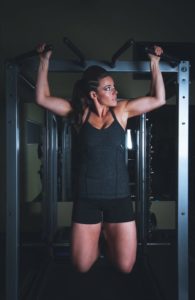 I was never one of those kids who excelled at or looked forward to gym class. The schools I attended focused very heavily on team sports for physical education. While that may have been motivating for students who enjoyed and were good at basketball, football, or volleyball, I sure wasn’t one of them.
I was never one of those kids who excelled at or looked forward to gym class. The schools I attended focused very heavily on team sports for physical education. While that may have been motivating for students who enjoyed and were good at basketball, football, or volleyball, I sure wasn’t one of them.
One of the best parts of becoming an adult has been gaining the freedom to explore many different types of exercise and discovering what actually appeals to me. It has been especially interesting to see what my body is capable of as far as weightlifting goes.
I never would have imagined that I’d love lifting weights or that I’d become as strong as I have. There are so many goals I still want to accomplish, and I’m looking forward to seeing what I’ll be able to do next.
If you haven’t begun lifting weights yet, I can’t encourage you enough to give it a try. It is such a fantastic way to get into better shape and, as I hope this post has showed you, the benefits of it can affect so many different parts of your life.

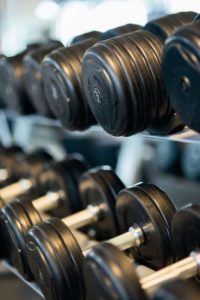 Today I’m going to be talking about the parts of weightlifting that I hate.
Today I’m going to be talking about the parts of weightlifting that I hate.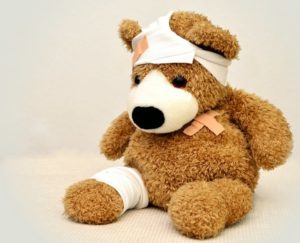 This isn’t something I’d recommend to anyone who isn’t willing to put in the time to learn how to do it safely. One of the benefits of walking is that it’s pretty difficult to hurt yourself when you’re on a walk. There might be an occasional slip and fall in slippery conditions, but other than that a walk can be taken safely regardless of your posture, how you move your body, or how much attention you’re paying to your surroundings.
This isn’t something I’d recommend to anyone who isn’t willing to put in the time to learn how to do it safely. One of the benefits of walking is that it’s pretty difficult to hurt yourself when you’re on a walk. There might be an occasional slip and fall in slippery conditions, but other than that a walk can be taken safely regardless of your posture, how you move your body, or how much attention you’re paying to your surroundings. One of the things I found most frustrating about lifting weights in the beginning was how much time it took to notice any tangible results from my workouts.
One of the things I found most frustrating about lifting weights in the beginning was how much time it took to notice any tangible results from my workouts.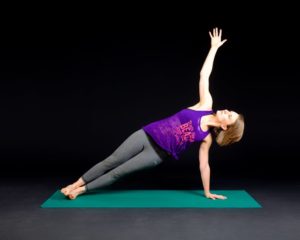 I’m a firm believer in celebrating every success if you’re having trouble perfecting a specific move or need some encouragement as you grow stronger and fitter.
I’m a firm believer in celebrating every success if you’re having trouble perfecting a specific move or need some encouragement as you grow stronger and fitter.
 Track Your Progress
Track Your Progress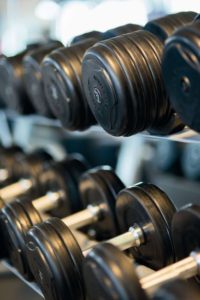 I’ve been asking myself this question over the past week or two. Since I work out at home instead of going to the gym, I try to be very mindful of what equipment I buy and when I buy it. My tiny apartment can only store so many items at once!
I’ve been asking myself this question over the past week or two. Since I work out at home instead of going to the gym, I try to be very mindful of what equipment I buy and when I buy it. My tiny apartment can only store so many items at once!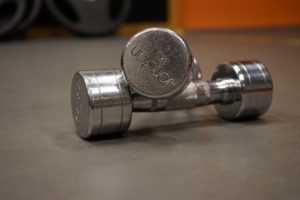 One of the most interesting things about fitness culture is how many different rules there are about what you are and are not supposed to do in order to get healthier. I’ve learned so much about the art of staying fit by listening to what other ordinary people find helpful.
One of the most interesting things about fitness culture is how many different rules there are about what you are and are not supposed to do in order to get healthier. I’ve learned so much about the art of staying fit by listening to what other ordinary people find helpful. The final problem I have with it is that I believe exercise should be fun for everyone. As someone who isn’t competitive, having only one winner at the end of it makes me not want to play at all.
The final problem I have with it is that I believe exercise should be fun for everyone. As someone who isn’t competitive, having only one winner at the end of it makes me not want to play at all. Once or twice a year, I’ll buy a couple of bars of dairy-free chocolate and think happy thoughts about that part of my childhood. Those extra calories are easily burned away over the next few months until I treat myself again.
Once or twice a year, I’ll buy a couple of bars of dairy-free chocolate and think happy thoughts about that part of my childhood. Those extra calories are easily burned away over the next few months until I treat myself again. Today’s post is going to be short and sweet. I don’t mind writing a long post when the topic requires it, but I also think there’s something to be said for conserving your words if fewer will do just as well.
Today’s post is going to be short and sweet. I don’t mind writing a long post when the topic requires it, but I also think there’s something to be said for conserving your words if fewer will do just as well. A new fitness fad comes along every decade or so. There were gentle stretching exercises for ladies in the 1910s, twist dances in the 1950s, aerobics videos in the 1980s, and Zumba classes in the 2010s. (If you haven’t seen it already, this video shows
A new fitness fad comes along every decade or so. There were gentle stretching exercises for ladies in the 1910s, twist dances in the 1950s, aerobics videos in the 1980s, and Zumba classes in the 2010s. (If you haven’t seen it already, this video shows  The Second Half of My Prediction
The Second Half of My Prediction I was in great shape in my early to mid-twenties thanks to a physically active job I had back then that kept me running around all day. As my routine shifted over time, though, I found myself gaining weight and losing some of the strength I had built up.
I was in great shape in my early to mid-twenties thanks to a physically active job I had back then that kept me running around all day. As my routine shifted over time, though, I found myself gaining weight and losing some of the strength I had built up. It Gets Better
It Gets Better It’s been a few weeks since I blogged about fitness. I stuck to my exercise routine pretty well during the holidays. (My diet, though, definitely had more treats included it than normal).
It’s been a few weeks since I blogged about fitness. I stuck to my exercise routine pretty well during the holidays. (My diet, though, definitely had more treats included it than normal).